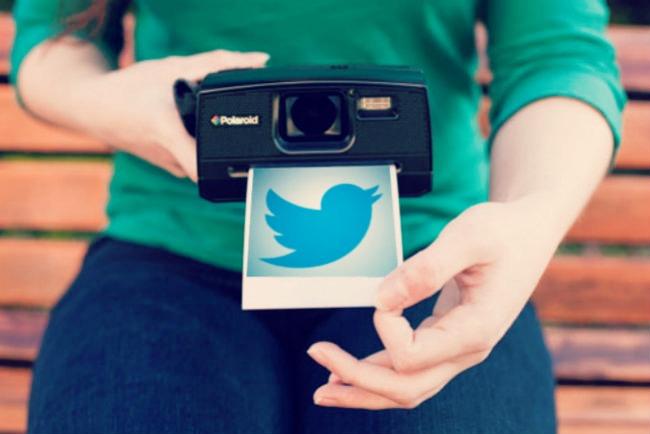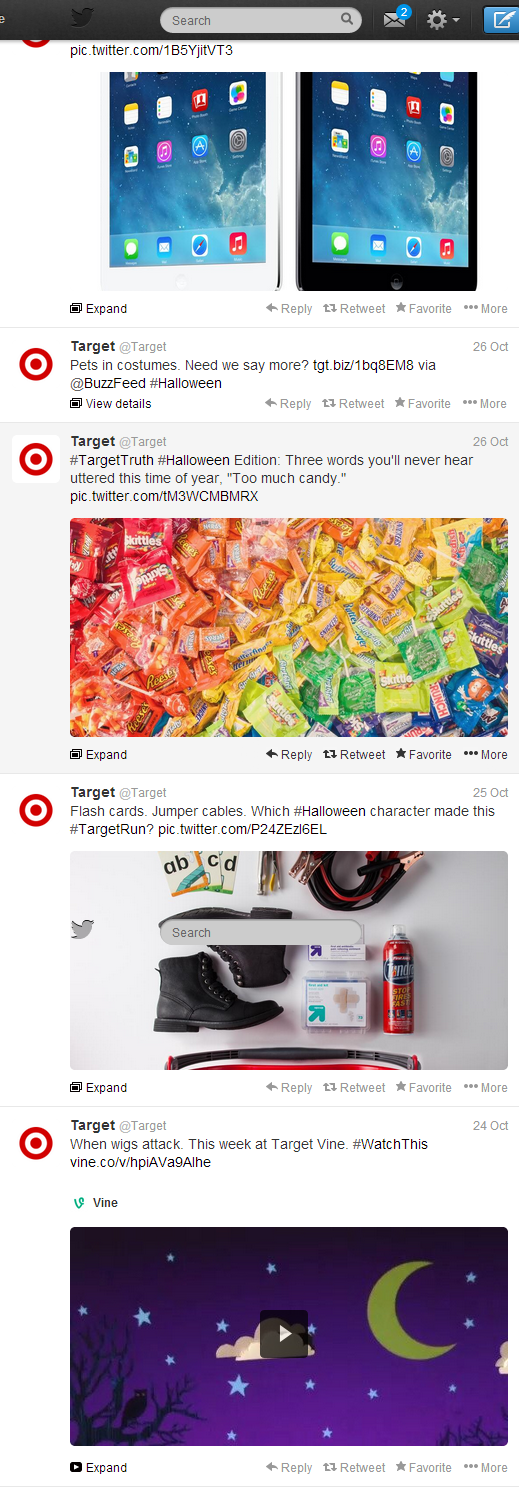
Yesterday, Twitter rolled out a new feature that gives content uploaded from its native photo client and Vine a lot more real estate in your feed. Now, when you log in and glance over your stream, you won’t see links prompting you to expand a tweet for the full picture or the Vine video. Instead, you’ll see a much larger percentage of the image or video, which you can tap to view the full thing or to start playing it.
Bigger blocks of visuals fill up the space, and the idea of a preview has been redefined by the network.
There’s been the usual early griping about the feature; users don’t want to see every single photo uploaded via the Twitter client, or every Vine. The engorged previews take up too much space. A lot of people are asking how to turn it off.
Unfortunately, you cannot turn it off. Twitter wants to fill the feed with photos and Vine videos, and so it shall remain. And the reasons are incredibly obvious.
The Pinterest effect
The new Internet order has evolved thanks to a few sites that have been able to almost magically capture user eyeballs and retention – one of those platforms is Pinterest. Pinterest, now worth a mind-boggling $3.8 billion, is a marketer’s dream come true. The site is one of the highest social drivers of e-commerce; and while Facebook still has a hold on this space, sales that are generated by Pinterest are of higher money value. Basically, Pinterest equals cash money.
There are a few factors that have made the network into such an e-shopping and branding powerhouse. For one, it’s highly visual. And two, its infinite scroll feature has proven addictive for users. It’s been increasingly adopted across various social platforms, is a way publishers keep users lingering longer – and, when it’s combined with eye-catching visuals (you just want to see the next one), it’s a potent mix. Twitter (and its many advertisers) are clearly keen to adopt these business-friendly Pinterest perks.
Images drive interactivity
There’s also the simple fact that social content with images (or video) drive interactivity. A recent study showed that people are more likely to retweet or favorite tweets with photos; a look at my own Twitter analytics proved as much. Other social platforms aren’t immune to this either: Facebook posts with photos get 39 percent more interaction than those that are text-only. Twitter is a text-heavy network, especially since Twitter Card support was cut for a handful of third-party image apps.
Twitter wants to drive retweets and @ messages and faves; these are the things users look for under their Interaction tabs – these are the things they respond to, sending more data out into the tweet-filled ether. Statistically, throwing these photos into the mix without our even asking to see them will drive more interaction. More interaction means more data, more data means more value, more value means Twitter is a more attractive asset to potential partners and investors.
Because … brands
If you thought that this whole thing just maaaaybe had something to do with brands and marketing and advertising and all that jazz, you are correct sirs and madams! Social networks have been bulking up photos for the last year. Instagram went edge-to-edge, Facebook bumped up the size of News Feed and side bar ads, and Twitter did the same with all images in the feed. You can just imagine these networks pitching advertisers on the power of ‘big’: “Look, we know that the bigger something is, the harder it is to ignore it; if users want to log in here, they’re going to have to see your bigger, beautiful ad.” And because Twitter is particularly text-heavy, it’s a solid sell to be able to tell clients they now have a better approach than before, when we users had to hit expand to see more.
Brands already have a truly visual platform for “natural” advertising, where engagement is high – Instagram. More and more, Instagram is being embraced by marketers, and for good reason. Images speak louder than words; showing your product is better than talking about it. But since Twitter doesn’t embed Instagrams anymore (unless you’ve got that handy IFTTT workaround up and running), advertisers who push their Instagram photos to Twitter are out of luck when it comes to the new “preview” feature. So instead, maybe they’ll use the in-house Twitter photo-sharing service, which comes with filters and everything! See, it’s convenient!
The update isn’t going to kill Instagram by any means, and brands won’t abandon it – but if Twitter can even just slightly insert itself into the love affair between advertisers and Instagram, then consider the photo-in feed feature a huge success.
Look: This is what the Gap’s Twitter stream looks like.

The Gap is relying in TwitPic and Instagram to share photos – neither are getting the fuller photo preview treatment.
And here’s Starbucks’ stream, making full use of the new update:

Starbucks, which is one of the most active and popular brands on Instagram, is use Twitter’s native client instead of Instagram to show off photos on Twitter – and display them in all their enormous glory.
What are we losing?
Well, technically, we’re gaining more photo viewing. We might lose some speed. (Twitter seemed awfully slow at the initial roll out of this feature yesterday.) And if you use the native Twitter client, you’ll find yourself hitting the “X new tweets” prompt much more, because photos are taking up a lot more space and you can’t see as many tweets on your screen.
And as you can see above, this is a goldmine for brands that want you looking at what they’re selling. Check out what the streams of the some of the most active brands on Twitter look like now.
- 1. Dunkin Donuts
- 2. Pizza Hut
- 3. Target
These are handles that tweet a lot, and if you follow them – for whatever reason – you’ll find yourself inundated with ads, and the feature could easily end up being abused.

The positive side? Images are pretty, and we’ve proven as users that we like looking at them, time and time again. If this is the medium we want to be advertised to in, then perhaps the changes will ease the pain of missing “what Twitter used to be.” Buzzfeed also points out that becoming a viral hit via Vine or a Twitter pic just got a lot easier, and that users’ will personally be rewarded with faves and follows; not only the content they uploaded will be recognized, which is what happens on a lot of other social networks.
Still, Twitter is a quickly becoming more of a playground for advertisers to flex their creative muscles (Oreo’s Super Bowl ad, anyone?), and the playing field just got a lot wider for them.
Editors' Recommendations
- The 10 big ways that Threads is totally different from Twitter
- It’s not just you – Twitter is down for users around the world
- Elon Musk just did something uncontroversial at Twitter
- How to use Twitter Circle to limit who sees your tweets
- Edited tweets may be coming to your Twitter timeline soon





